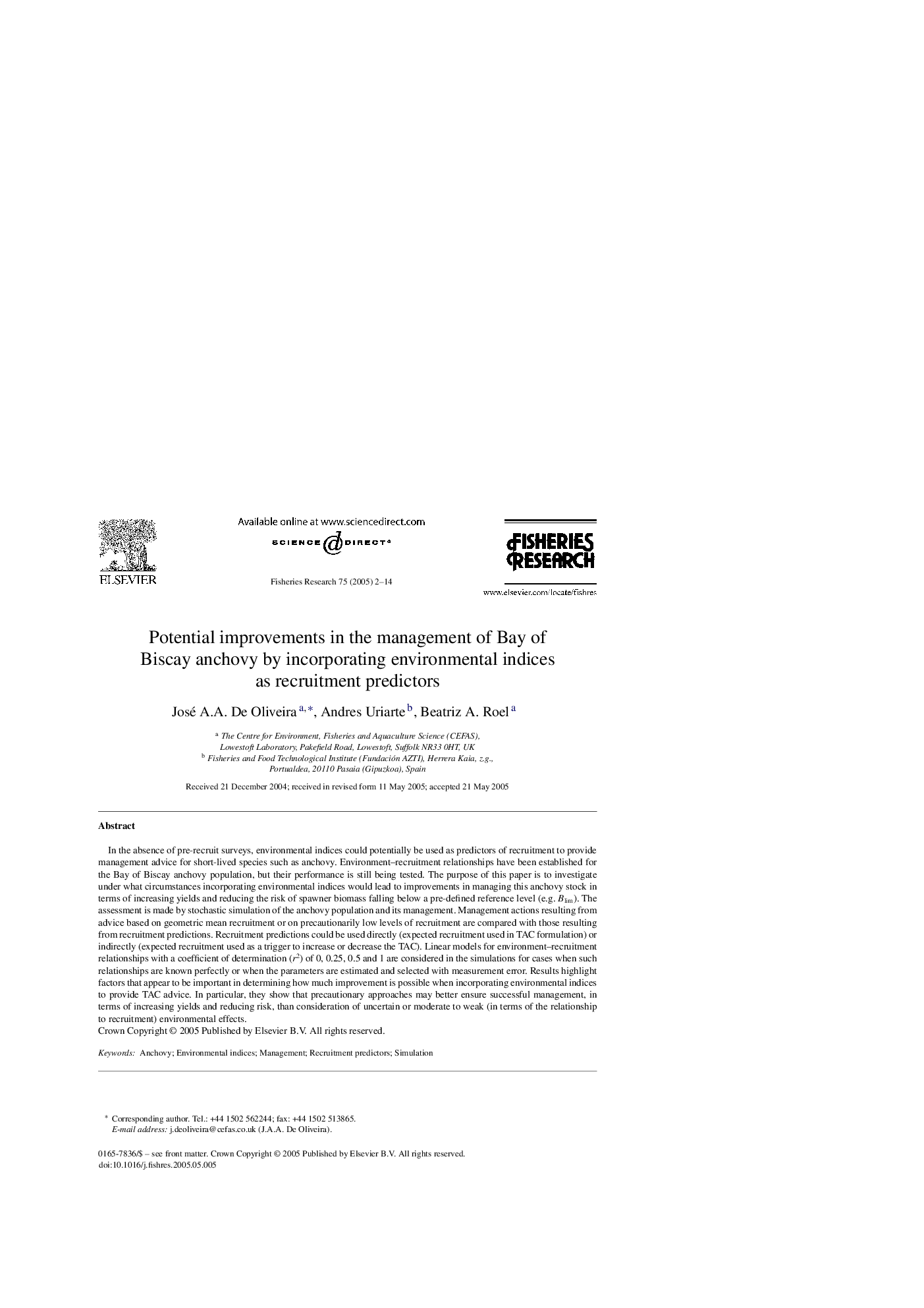| Article ID | Journal | Published Year | Pages | File Type |
|---|---|---|---|---|
| 9481726 | Fisheries Research | 2005 | 13 Pages |
Abstract
In the absence of pre-recruit surveys, environmental indices could potentially be used as predictors of recruitment to provide management advice for short-lived species such as anchovy. Environment-recruitment relationships have been established for the Bay of Biscay anchovy population, but their performance is still being tested. The purpose of this paper is to investigate under what circumstances incorporating environmental indices would lead to improvements in managing this anchovy stock in terms of increasing yields and reducing the risk of spawner biomass falling below a pre-defined reference level (e.g. Blim). The assessment is made by stochastic simulation of the anchovy population and its management. Management actions resulting from advice based on geometric mean recruitment or on precautionarily low levels of recruitment are compared with those resulting from recruitment predictions. Recruitment predictions could be used directly (expected recruitment used in TAC formulation) or indirectly (expected recruitment used as a trigger to increase or decrease the TAC). Linear models for environment-recruitment relationships with a coefficient of determination (r2) of 0, 0.25, 0.5 and 1 are considered in the simulations for cases when such relationships are known perfectly or when the parameters are estimated and selected with measurement error. Results highlight factors that appear to be important in determining how much improvement is possible when incorporating environmental indices to provide TAC advice. In particular, they show that precautionary approaches may better ensure successful management, in terms of increasing yields and reducing risk, than consideration of uncertain or moderate to weak (in terms of the relationship to recruitment) environmental effects.
Related Topics
Life Sciences
Agricultural and Biological Sciences
Aquatic Science
Authors
José A.A. De Oliveira, Andres Uriarte, Beatriz A. Roel,
